From July 31 to September 26, 2022, the Royal Palace of Palermo presents The Golden Calf exhibition, organized by the Fondazione Federico II under the patronage of the Ministry of Culture. After three years of work, Ryan Mendoza ’s silent and indignant cry against false idols arrives from the Royal Palace: an almost entirely site-specific exhibition spread among the rooms, courtyards and gardens of the palace, once the residence of the sovereign. As in an exercise in “cognitive defusion,” the artist invites us to expand our gaze and confront reality as a space of possibility against the emerging thinking of our time that tends to narrow.
The exhibition, which has seen the invaluable and ongoing collaboration of the Brodbeck Foundation, and the Morra Greco Foundation, which lent some of the works, is the result of an enormous amount of work on cross-referencing tradition and contemporaneity.
“I accepted the challenge of a contemporary exhibition, in a place with almost a thousand years of history, in the midst of a pandemic,” said the artist. "I created a mountain of stuffed animals and flights of bats, a metaphor for a dull and subjugated society, idols before which we prostrate ourselves, we tribes in search of a guide capable of reactivating the ability to perceive and intercept lost values. In the paintings, decapitation appears to me in retrospect: the men and women I find like this, like floating, rootless busts. This exhibition evokes betrayal to me, betrayal to nature, betrayal between human beings, universal betrayal. The Frederick II Foundation has partnered with the students of the Academy of Fine Arts of Catania, whom I thank because with them we created the great work Stuffed Animals."
“The complex path of cultural and historical-artistic enhancement that we have undertaken,” commented Gianfranco Miccichè, president of the Federico II Foundation, "reaches with the Ryan Mendoza exhibition the most courageous stage of the Royal Palace’s journey toward themes with an international scope. This Palace belongs to the city and to the world. Thus the diffuse exhibition The Golden Calf draws the attention of viewers to seemingly unusual elements in one of Europe’s oldest royal residences. A cultural-exhibit construction that marks the immortality and continuity of art from the past to the present day, demonstrating that there is one great path of perspective openings in the Royal Palace that has always accommodated the manifold feelings and expressiveness of people and artists.“ ”It is as if Ryan Mendoza in his works is constantly looking for something," added Patrizia Monterosso, general director of the Fondazione Federico II. “Perhaps it is an incessant journey that finds its energy in the double bet of truth and freedom. Certainly not of a truth determined a priori. But the truth of original meaning, which does not tolerate false preachers of virtue. I believe that it is incumbent upon the Frederick II Foundation to try to go further: opening the palace and opening it to the contemporary is not a slogan, it is a fact that has happened over the years that is repeated and evolves over time. The work done for three years alongside a singular artist like Ryan, who fishes in tradition but acts in the contemporary with courage and innovation, goes in this direction.”
Almost all the works were created by Mendoza specifically for this occasion, working extensively on the paintings, ceramic sculptures and others in mixed media.
The Fondazione Federico II wanted to create an exhibition spread across different spaces in the Palace, outside the Palace and even away from Sicily, and embracing different artistic languages, from video to sculpture to painting. Mendoza shatters any staticity of meaning so that the real plot is the non-plot and the anti-narrative. However, a clue can already be discerned in the title TheGolden Calf, which evokes an imagery that can range from art to religion and combine themes of traditional iconography with the everyday malaise of our times. The “Vitulus Aureus” appears in the Bible (Exodus 32) when on Mount Sinai, while waiting for Moses’ return, Aaron had a golden calf cast and built an altar in front of it to satisfy the need to worship an idol. The artist associates the golden cal f with the worship of material goods and false idols.
On the main floor, Mendoza’s paintings that feed on only seemingly irreconcilable visions such as American pop culture and the European baroque tradition, reinterpreted in the light of the present. It is an expression of that return to a language that seemed obsolete by then but which manages to reinvent the everyday through themes in which contemporary obsessions are reflected. The artist’s imagery is rich with epiphanic presences such as portraits of people and animals. In Mendoza’s works, the dripping of color, reminiscent of dripping and graffiti, creates a gash in the pictorial surface invited to strip itself of its illusory nature. Similarly, the intersecting and mutually reiventing painting and writing resort to ambiguity as a further hypothesis of knowledge and grasp the hidden meaning of the events closest to us with an awareness of the finiteness of our time and free of myths, rituals and stereotypes. The artistic invasion also continues outside the Palace to nip in the bud the idea of a display that results in a closed system, thanks to the collaboration with the MANN National Archaeological Museum in Naples, with the Mausoleum of Cecilia Metella, Castrum Caetani (Appia Antica Archaeological Park) in Rome and with the Museum System of the University of Palermo (Palazzo Chiaramonte Steri and Botanical Garden). Bats are found in these places, in a resting position, searching for their natural habitat.
The synthesis of Mendoza’s artistic-pictorial message is condensed in the Polyptych placed in the Viceroy Room, which consists of nine elements, where complex references alluded to by the animals are combined, but also human presences as in the case of the embrace, this time in a sensual key, of Fabia with her love. Particularly intense is the alternation of female faces(Think of All the Good Things; Girl with hair in front of face; Lara eyes closed; One last time) that offer themselves and at the same time evade the gaze of the audience in a continuous reference to possible contaminations with the other.
A series of vivid and colorful works entitled Abstract is given special attention. These are works made on glass that have been placed in the exhibition route as diaphragms. It seems that the artist in these patterns gives glimpses of various signs reminiscent of the Palatine Chapel, repeatedly admired by Mendoza during site visits, as if to create an undercurrent memory and a whole works-exhibition, exhibition-palace, works-exhibition-palace. These works at the same time take on the function of scanning the space between the other works and thus accompanying their never passive viewing. The background of one of the Abstracts refers explicitly to that of one of the paintings. Ryan Mendoza’s plastic work also becomes central to the exhibition itinerary. Endowed with distinct energy, his research in sculpture and installation reveals the intentionally ambiguous nature of the artist’s production.
Stuffed animals is an installation made partially of ceramic and given by the accumulation of several stuffed animals piled up, childish toys that allude to the widespread compulsion to surround oneself with objects. The world of childhood appears again, evoked by the soft toys as a metaphor for free creativity. The heap of toys in the exhibition is the heap of our stolen freedoms, which we must reclaim in an attempt to resolve the ambiguous and twisted relationship between us and the world. Because of the poignant use of monochrome that blurs the iconographies known to us, these individual stuffed animals are silent when observed individually while they resonate in unison as a whole and in the choice to place Stuffed animals in the Maqueda courtyard of the Royal Palace.
At the Gardens of the Royal Palace and in other places such as the MANN National Archaeological Museum in Naples, the Mausoleum of Cecilia Metella, Castrum Caetani (Appia Antica Archaeological Park) in Rome and the Museum System of the University of Palermo, an equal number of Bats are placed, in a new version designed for the Federico II Foundation. The bats, in their resting position, appear to be searching for their natural habitat. These “anti-heroes” for Mendoza include the multitude of the marginalized and the weakest.
The Golden Calf is a project realized by the Fondazione Federico II, directed by Patrizia Monterosso in collaboration with Gianluca Collica (Brodbeck Foundation) and Paola Nicita. Valuable contributions were made by Paolo Giulierini, Paolo Inglese, Simone Quilici, Stefano Roascio, Ilaria Sgarbozza, Antonio Portale and the Academy of Fine Arts of Catania, which worked alongside the artist on the work Stuffed Animals.
For info: www.thegoldencalf.it
Hours: Friday, Saturday and Monday from 8:30 a.m. to 5:30 p.m. (last admission 4:30 p.m.). Sundays and holidays from 8:30 a.m. to 1:30 p.m. (last admission 12:30 p.m.).
© photographs and artwork - Ryan Mendoza All rights reserved. Copyright © 2022 The Frederick II Foundation Palermo in collaboration with Ryan Mendoza.
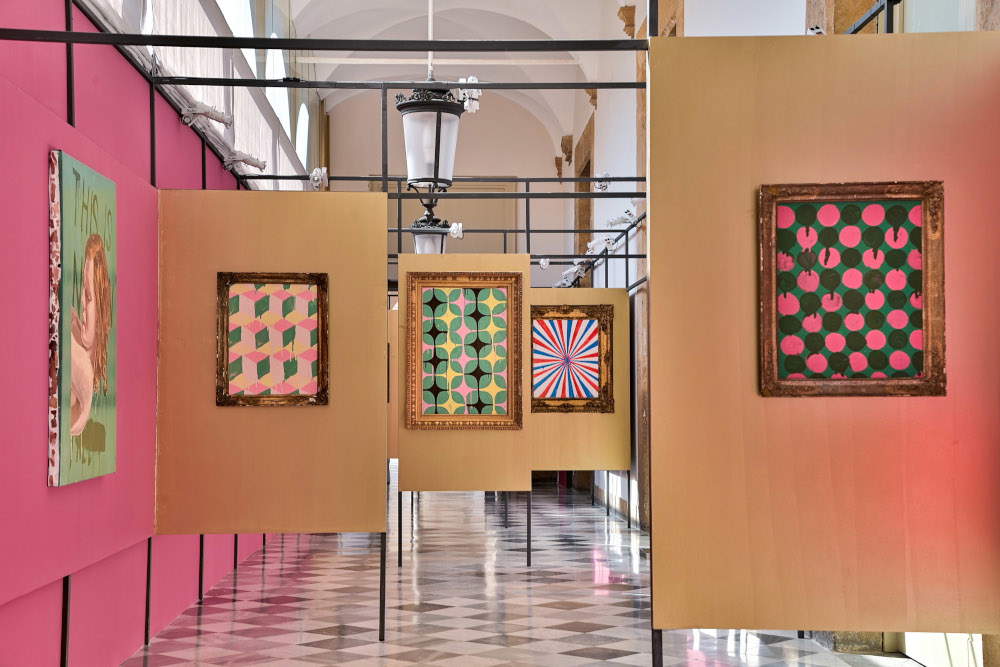 Setting up of the
Setting up of the Setting up of the
Setting up of the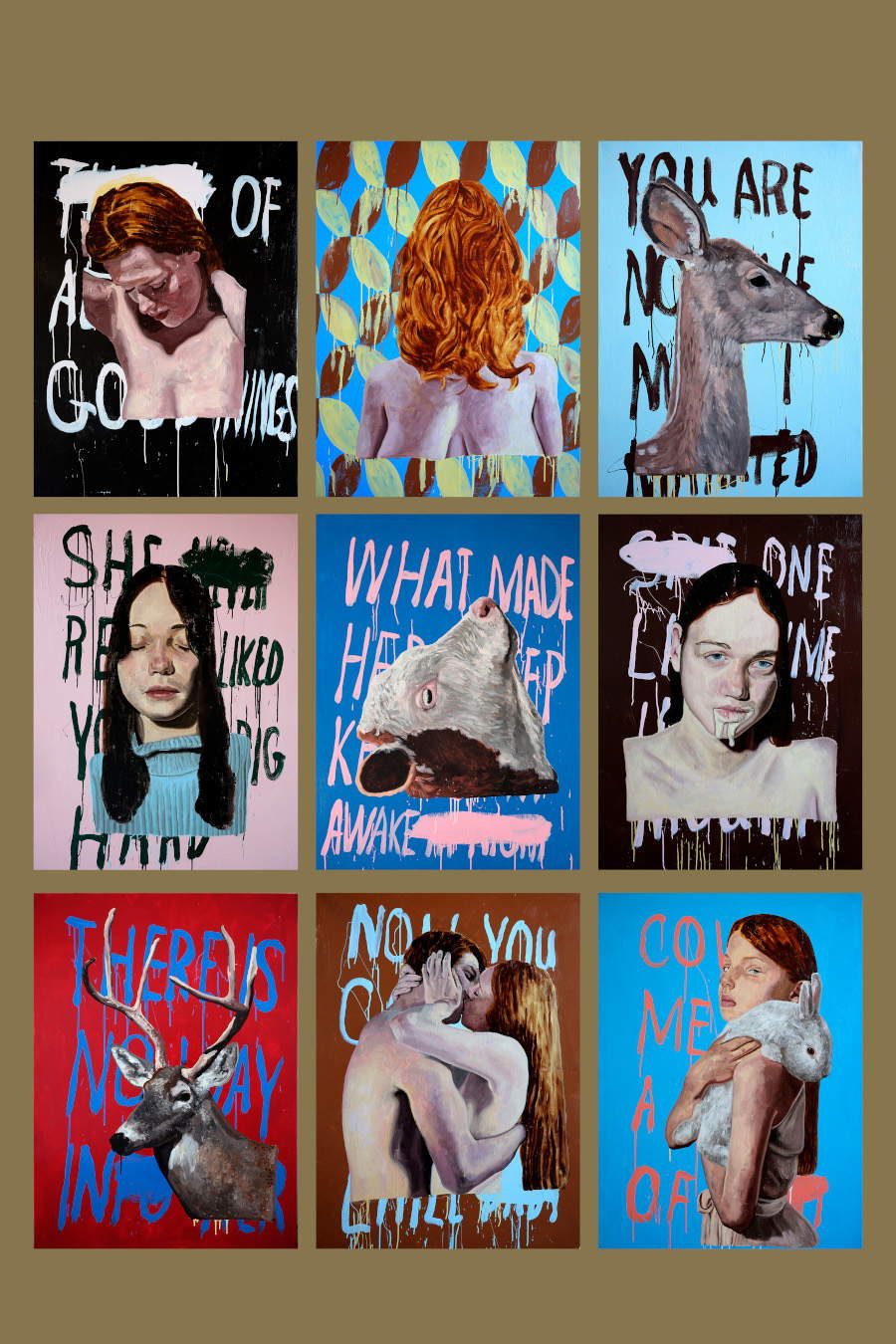
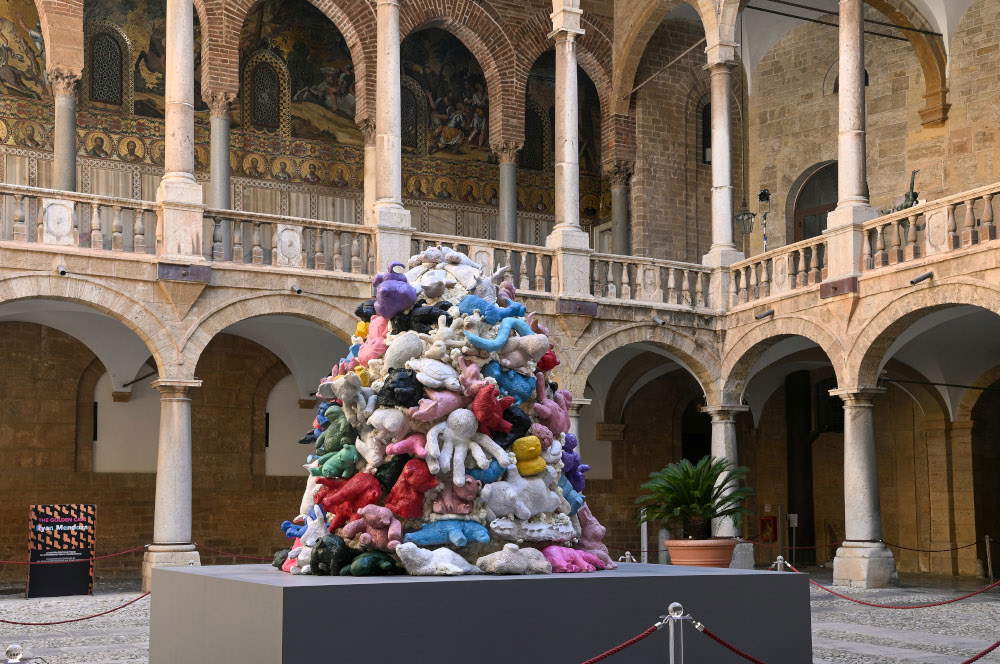
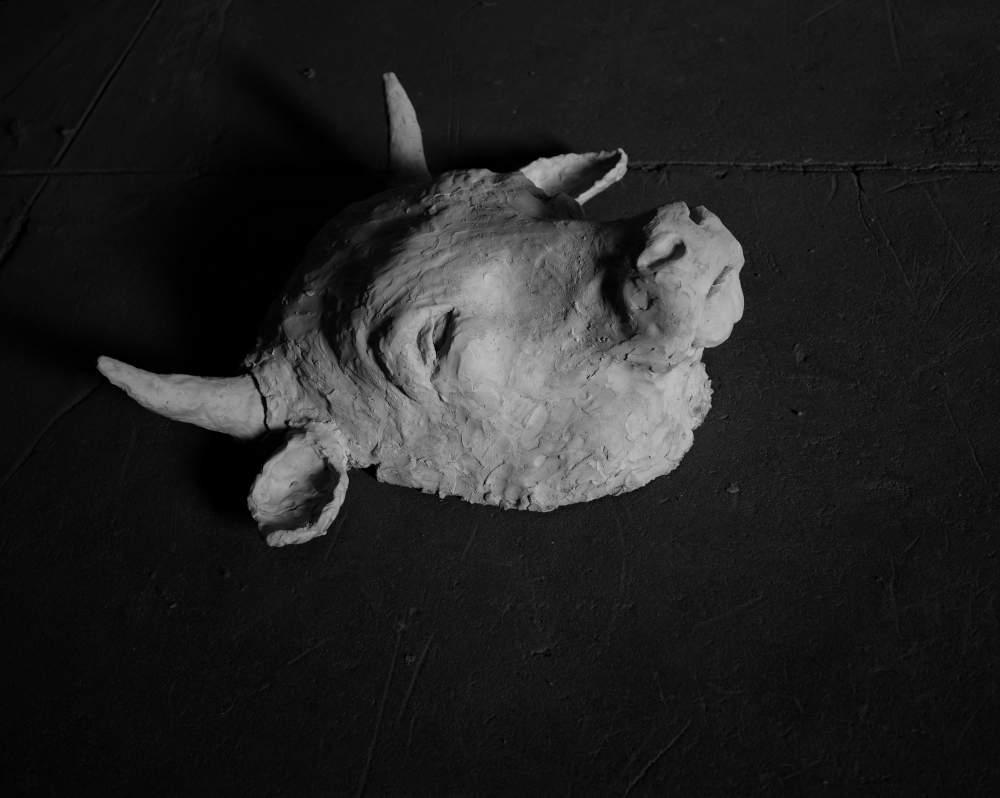
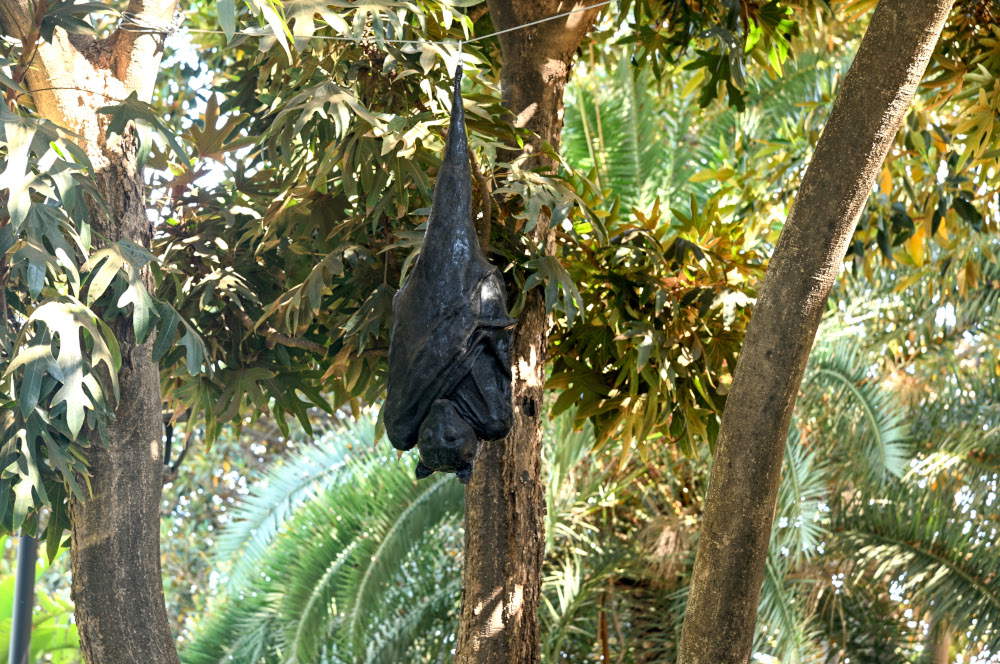
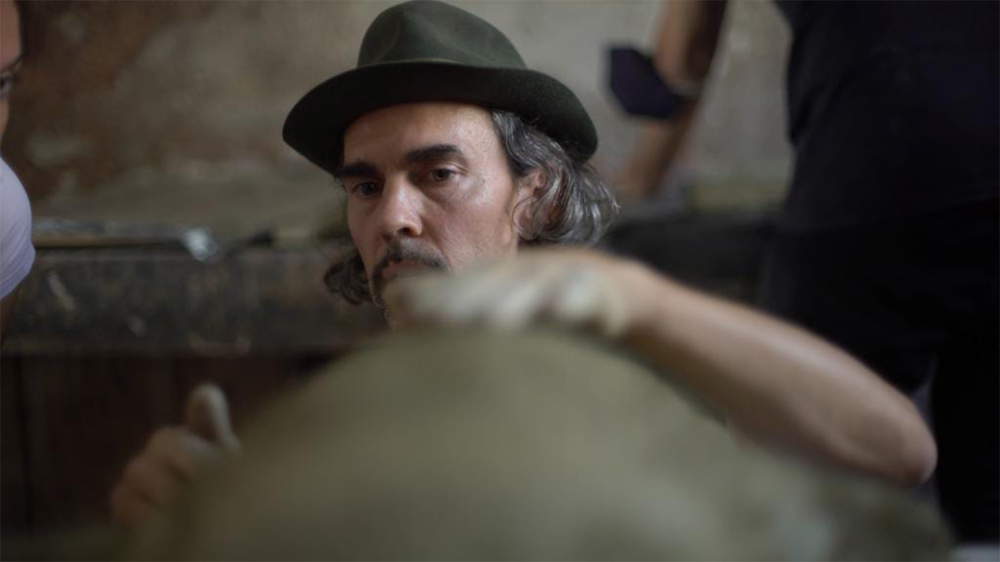
 |
| At the Royal Palace of Palermo, Ryan Mendoza's indignant cry against false idols |
Warning: the translation into English of the original Italian article was created using automatic tools. We undertake to review all articles, but we do not guarantee the total absence of inaccuracies in the translation due to the program. You can find the original by clicking on the ITA button. If you find any mistake,please contact us.